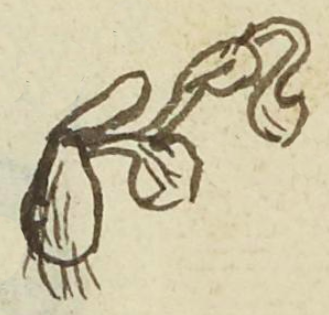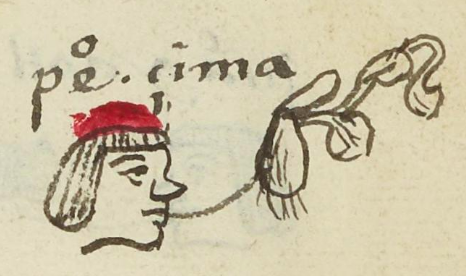Cima (MH660r)
This black-line drawing of the simplex glyph for the personal name Cima ("Wild Potato," from cimatl, an edible medicinal root, and attested here as a man's name) shows seemingly two bulbous roots and a sprig with leaves. The roots are vertical, and the branches bend off to the viewer's right. At the tip of one of the branches are two coils.
Stephanie Wood
Apparently, this is both a wild potato (cimatl) and a medicinal plant (cimapatli or cimapahtli, with the glottal stop), which has been abbreviated in the name. According to the Florentine Codex (1963, Book 11, 125 and 133), if not properly cooked, the root can cause vomiting and diarrhea. The plant above ground is the cuauheco.
Stephanie Wood
peo. çima
Pedro Cima
Stephanie Wood
1560
Jeff Haskett-Wood
herbs, hierbas, roots, raíces, medicinas, nombres de hombres

cima(tl), edible medicinal root of an herb, https://nahuatl.wired-humanities.org/content/cimatl
Raíz o Tubérculo Comestible
Stephanie Wood
Matrícula de Huexotzinco, folio 660r, World Digital Library, https://www.loc.gov/resource/gdcwdl.wdl_15282/?sp=400&st=image
This manuscript is hosted by the Library of Congress and the World Digital Library; used here with the Creative Commons, “Attribution-NonCommercial-ShareAlike 3.0 License” (CC-BY-NC-SAq 3.0).










